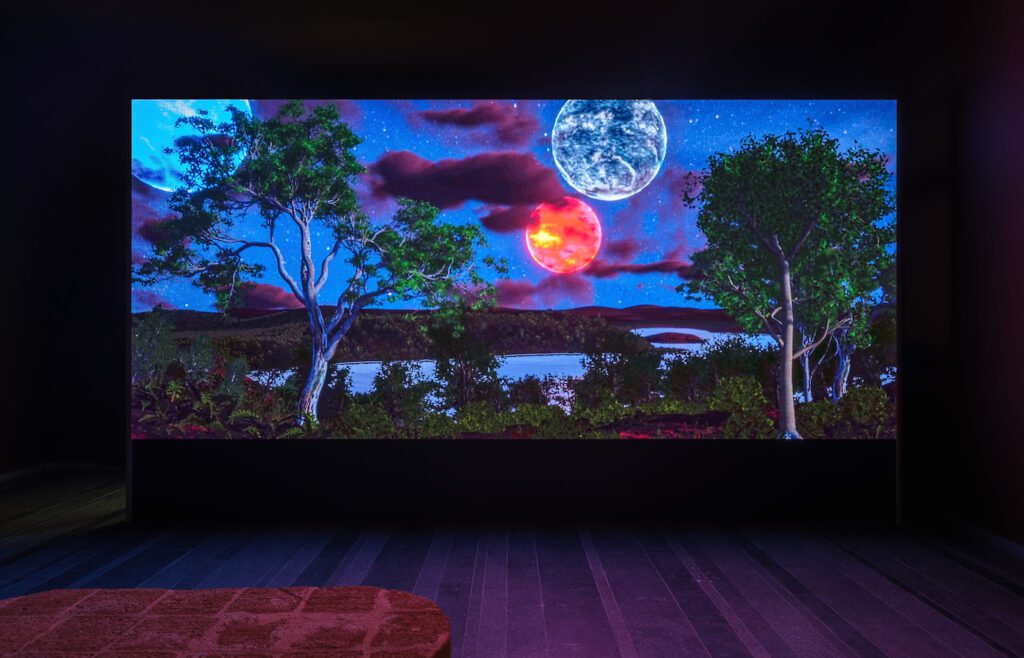max goelitz, Berlin, Germany
13 Sep 2023 - 11 Nov 2023

Rindon Johnson, Clattering, 2021 Live rendering CGI projection Installation view, Future Generation Art Prize, PinchukArtCentre, Kyiv Ukraine Courtesy of Rindon Johnson and François Ghebaly Gallery Photo: Maksym Bilousov
max goelitz announces the exhibition five by Rindon Johnson as part of Berlin Art Week in September. The artist‘s first solo exhibition at the Berlin gallery is based on his science fiction novel Clattering and presents an expansive installation. Originally created on the occasion of Johnson‘s nomination for the Future Generation Art Prize 2021, this work was already on view at the PinchukArtCentre in Kyiv. For the exhibition five, the multimedia installation will be embedded into an expanded exhibition concept with new works by the artist.
The novel Clattering is created in collaboration with writer Rainer Diana Hamilton and is a proposition for open-mindedness, multiplicity and opposition to the organizational states of our world, which is mostly built on various forms of dualism. The authors challenge our accustomed view of relationships, hierarchical structures, systems of reproduction, and resource control. Johnson and Hamilton elaborate subtle but important differences between humans and human-like characters in the novel, where there is no gender, hunger, war, or physical violence.
Against this backdrop, the conventions of our real world are juxtaposed with this fictional world. The main plot of the narrative develops as the characters discover that the original inhabitants of their planet were immortal until their longstanding knowledge of it was taken from them.
The gallery space features a large-scale LED wall and a backlit window installation depicting an iridescent cloud in stained glass. Wooden seating objects designed by the artist invite the viewer to observe the changing light mood of both works. The presentation is complemented with wall works as well as free-standing works made of leather, through which Johnson establishes a connection between object, language, and the viewer in order to question social hierarchies and complex power structures, which are also questioned in Clattering. For the artist, leather as a byproduct of industrial processing chains reveals a broader historical and conceptual condition that highlights the treatment of other living beings and can be applied to the colonialist legacy of Western states. For his physical, object-based works, he mostly uses cowhide, which he exposes to various weather conditions for up to a year, allowing the environment and climate to imprint the hides surface. The leather as a protective skin on the one hand, refers to the permeability and vulnerability of the body on the other, and also stands for questions of identity that always accompany Johnson‘s work.
The exhibition is accompanied by a publication that includes the first 40 pages of the novel and thus allows an insight into the literary work of the artist. Clattering will be presented for the first time as part of a reading by the artist at the gallery.